New Zealand – the land of towering mountains, rugged valleys, rolling green hills, 26 million sheep, and endless opportunities for adventure. If exploring this fascinating country at the bottom of the world is on your bucket list, you’ve come to the right place. Discover below your ultimate 2-week New Zealand road trip, crafted by a local, with everything you need for a once-in-a-lifetime adventure.
Day 1: Arrive & Explore Auckland
Your New Zealand adventure is about to begin! To make the most of your time in New Zealand, we recommend renting a car and exploring under your own steam. You can rent a car right from Auckland International Airport, and from there, head into Auckland CBD to get your first taste of the laidback Kiwi culture.

What to do and see in Auckland:
Auckland is known as the City of Sails, and after a walk along Viaduct Harbour, you’ll certainly understand why. Take in the beautiful scenery along the harbor, people watch and enjoy the buzz of never-ending bars, restaurants, and shops. Next, a visit to the Sky Tower is a must. Standing 722 feet (220 m) high, the Sky Tower is the highest building in the Southern Hemisphere. Enjoy a meal above the city, check out incredible views from the Observation Deck, or for the adventure junkies, start your trip with a bungy jump.
If you have more than two weeks up your sleeve, consider adding these three amazing day trips you can take from Auckland by car to your itinerary.
What to eat:
Thanks to Auckland’s melting pot of cultures, you’ll find delicious food of all varieties. A stroll through Auckland CBD or along the Viaduct will no doubt have your stomach growling. Either let your nose decide for you, or for a guaranteed delicious meal, try out Soul Bar & Bistro for classic New Zealand food with a modern twist or Coops Corner Pub for delicious local beer and a fun, laidback atmosphere.
Where to stay:
$$$ – QT Auckland
$$ – Quadrant Hotel & Suits
$ – Jucy Snooze
Day 2: Coromandel Peninsula
Travel time: 3 hours
Today, you’ll get your first taste of the magnificent beauty New Zealand is known for. Weave through fairly-tale-like rolling green hills and a seemingly endless number of sheep farms until you reach the pristine coastline of the Coromandel.

What to do and see on the Coromandel Penninsula:
A visit to the Coromandel isn’t complete without digging your own hot pool. Grab yourself a shovel (accommodations and general stores rent them out), head to Hot Water Beach at low tide, and take advantage of the natural hot springs seeping up. Next up, don your hiking shoes and explore Cathedral Cove. For the best views of the impressive cliffs and giant archways, hike the 1.5-mile (2.5 km) Cathedral Cove Walk.
What to eat:
Welcome to rural New Zealand. You may not find the endless upmarket restaurants you did in Auckland, but you will be treated to warm Kiwi hospitality and plenty of fresh farm-to-table food. For unmatched views, head to Salt Restaurant and Bar. Or, if you’d prefer to keep it casual, Luke’s Kitchen is a local favorite with tasty woodfired pizza.
Where to stay:
$$ – Bayside Holiday Units
$ – Absolute Beachview
Day 3: Rotorua
Travel time: 3.5 hours
Rotorua is known for its smell, giant redwood trees, and fascinating Maori culture. As you spend the day in arguably New Zealand’s most unique small city, you’ll discover just how weird and crazy Mother Nature and Kiwis can be.

What to do and see in Rotorua:
We’ve mentioned it before, and we’ll mention it again – Rotorua smells. And all you have to do to discover the region’s fascinating geothermal wonders is to follow your nose. Two of the best geothermal parks are Wai-O-Tapu, famous for its steamy lakes, and Waimangu Volcanic Valley, known for its large craters and bubbling hot springs.
Rotorua is also one of the best places in New Zealand to learn about Maori Culture. Te Pā Tū celebrates and preserves Māori traditions and offers visitors a glimpse into the fascinating rituals and stories of the Māori. If you have time, it’s also well worth visiting Whakawerawera Redwood Forest to stand under the Californian redwood giants.
What to eat:
To be amongst the buzz and choose from a range of cuisine, head to Eat Streat. Here you’ll find Kiwi classics like Mac’s Steakhouse, Brew Craft Beer Pub, and more upmarket restaurants like CBK Craft Bar & Kitchen.
Where to stay:
$ – Rotorua Thermal Holiday Park
$$ – Rydges Rotorua
Day 4: Taupo
Travel time: 1 hour
A short but scenic one-hour drive brings you to the charming town of Taupo, set on the shores of New Zealand’s largest lake. Locals and tourists flock here all year round for its scenic snow fields, thundering waterfalls, towering volcanoes, and serene lakes.

What to do and see in Taupo:
Taupo is home to New Zealand’s most visited natural attraction – Huka Falls. While it may stand at just 36 feet (11 m) tall, its staggering 58,100 gallons (220,000 liters) of water pouring over the falls every second is mind-blowing. That’s not all that’s on offer in Taupo, though. Rent a bike and tackle part of the 44 miles (71 km) Great Lake Walkway, or if you prefer to keep your feet on the ground, Spa Park and the Opepe Reserve offer great hiking for all levels.
Oh, and if you’re ready to get your adrenaline pumping and see Taupo’s incredible landscapes from above, book in for a Skydive. The coast-to-coast views and world-class instructors add to the already epic experience you’re about to embark on.
What to eat:
By now, you’ll have fallen in love with New Zealand’s cafe culture, and to carry on the tradition of delicious and reasonably priced afternoon meals, stop in at Baked with Love or Espresso Cove. Come evening, Taupo’s dining scene bursts to life at favorites like the Plateau Bar & Eater, Vine Eatery & Bar, and the Branty Eatery, all located right in town.
Where to stay:
$$ – Oasis Resort Taupo
$$$ – Hilton Lake Taupo
Day 5: Wellington
Travel time: 5 hours
You’ll want to hit the road bright and early today. After a 5-hour drive, you’ll have reached New Zealand’s capital on the southeastern coast of the North Island. While you can expect a bit of wind, okay, chances are a lot of wind, you’ll soon forget the less-than-ideal conditions as you explore Wellington’s quirky downtown and cultural offerings.
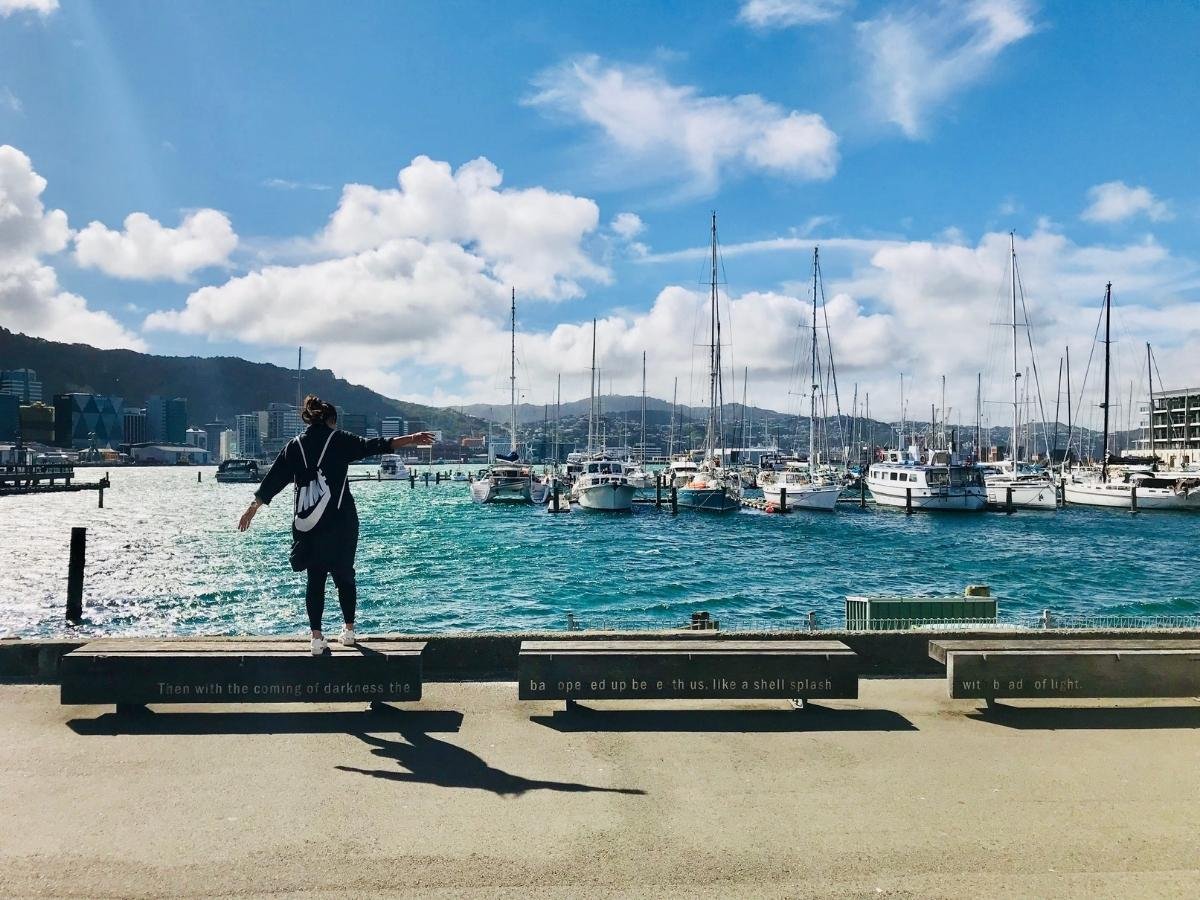
What to do and see in Wellington:
To learn about New Zealand’s rich cultural and geographical history, visit Te Papa Museum. Entry is free, so even if you pop in for an hour, it’s well worth it. Also on the list of free things to do in the Wellington Botanical Gardens, filled with native plants and impressive gardens. If you want to get your heart pumping, walk up Mount Victoria and be rewarded with panoramic views of the city, the Tasman Sea, and the Cook Straight. You can also drive up if you’re short on time.
What to eat:
If there’s one thing Wellingtonians are incredible at, it’s putting on a good feast. The city is jam-packed with delightful bars, restaurants, and cafes. Cuba Street is especially known for its food scene, with the likes of Kisa, a Turkish and Middle-Eastern-Inspired restaurant, El Matador, serving up Argentinian, and Olive, delighting guests with new-age New Zealand cuisine.
Where to stay:
$$ – Bay Plaza Hotel
$$$ – Mercure Wellington Abel Tasman Hotel
Day 6: Catch the ferry to Picton and drive to Nelson
Travel time: Ferry 3.5 hours, drive 3 hours
Say your goodbyes to the North Island and take an early morning ferry from Wellington to Picton. Deemed one of the most stunning ferry journeys in the world, you’ll discover the beauty of the Marlborough Sounds as you journey between islands. Stretch your legs in the small port town of Picton before continuing your journey to Nelson.
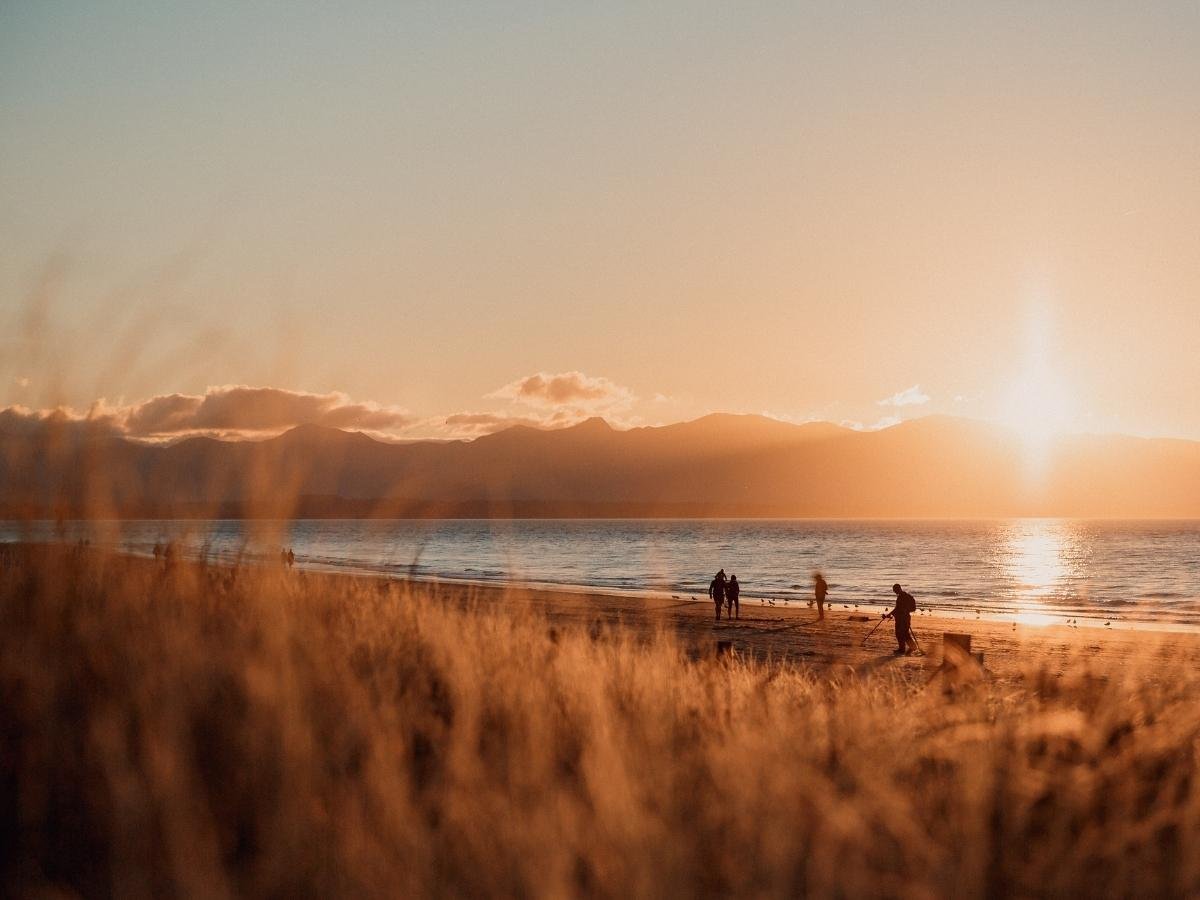
What to do and see in Nelson:
If you haven’t looked ahead, tomorrow you have a lot of exploring to do. So, tonight, take it easy with a stroll along Tahunanui Beach and enjoy the beautiful surroundings. On a warm evening, you may even want to pack a swimsuit and join the locals enjoying the warm waters.
What to eat:
Compared to your stay in the food capital of New Zealand, your choice of restaurants in Nelson may feel limited. However, if you know where to look, you’ll find plenty of tucked-away restaurants and cafes, each offering delicious meals at a very reasonable price. The Urban Oyster Bar & Eater, offering tapas-style cuisine and its wine bar, is sure to impress. Or, for delicious food that matches the views, The Boatshed is located right on the Wakefield Quay and prides itself on an ever-changing seasonal menu.
Where to stay:
After the busy past 5-days, you’ll be glad to hear you’ll be spending two nights in Nelson – giving you a chance to unpack and regroup before hitting the road again. Our top recommendations for a stay in Nelson include:
$ – INNBetween Lodge & Backpackers
$$ – Trailways Hotel Nelson
Day 7: Abel Tasman National Park
Travel time: 2 hours
Pack a daypack, your hiking shoes, and some extra layers – today, you’re exploring one of New Zealand’s Great Walks. Known for its golden beaches, playful wildlife, and pristine bays, you’ll feel like you’ve landed on a tropical island as you explore Abel Tasman National Park.

Marahau, a one-hour drive from Nelson, is deemed the gateway to Abel Tasman National Park, and from here, you can decide to kayak, boat, or hike your way around the park. For the hikers, start your trek right from Marahau and walk for as long as your heart desires along the Coastal Track.
If you want to see more of the Abel Tasman, a boat and kayak tour could be just your thing. Numerous companies offer different lengths of excursions, depending if you want to spend more time boating, kayaking, or hiking. Take your pick, pack a lunch, and enjoy an epic day exploring.
Day 8: Franz Josef
Travel time: 6 hours
Did you know Franz Josef Glacier is one of only three glaciers worldwide that cascades from mountain into temperate rainforest? It might be hard to imagine, but as you drive from Nelson to Franz Josef, you’ll no doubt realize how fascinating it is to see a glacier, rainforest, and the Tasman sea all within the same view.

What to do and see in Franz Josef:
If you’re nervous about the five-hour drive today, don’t worry, there are plenty of scenic stops on the way. Your first stop is at the Punakaiki Pancake Rocks, which features intriguing limestone landscapes and impressive blowholes. Next up, Hokitika sits on the Tasman Sea and is a great spot to stretch your legs with a walk along the coast and stop for some best in New Zealand fish and chips.
Before arriving in Franz Josef, you’ll want a game plan ahead of time to take advantage of the daylight hours. If the weather is nice, hike up the Franz Josef Glacier Valley Walk for stunning views of the glacier. Or, if your budget allows, book in for a helicopter tour that includes a scenic flight and a glacier landing.
Where to eat:
Restaurants are rather limited in Franz Josef. In fact, the two main restaurants are a stone’s throw from one another, so it just depends if you’re more in the mood for a traditional Kiwi pub meal at the Landing or a slightly more upmarket vibe at the Monsoon Bar.
Where to stay:
$$ – 10 Cottage
$$$ – Rainforest Retreat
Day 9: Queenstown
Travel time: 5 hours
Traveling further down the West Coast, nature somehow gets even more dramatic as the sea and mountains collide. Once you turn inland, you’ll journey through the Haast Pass, weaving amongst mountains and farmlands, up and over the Crown Range until you reach Queenstown.

What to do and see in Queenstown:
We’ll dive deeper into what to do in Queenstown when you’re back here for the full day on Day 11. In the meantime, enjoy a stroll around the small town, take in the endless mountain views and get ready for another incredible day tomorrow.
Where to eat:
Queenstown has a bit of everything when it comes to food. If you’re in the mood for authentic Japanese, head to Tanoshi. For Mexican with a modern twist, you can’t beat Margos. And if you fancy a casual restaurant with plenty of atmosphere, Yonder turns from cafe to restaurant to nightclub.
Where to stay:
If you want to participate in the vibrant nightlife on offer, stay in the town center where all the action is. On the other hand, hotels in Frankton are slightly cheaper, but there’s much less to do once the sun goes down. And a heads up, you’ll be here for the next three nights. Some great options include:
$$$ – The Reese Hotel (right in the middle of town and Frankton)
$$ – Blue Peaks Lodge (near town center)
Day 10: Milford Sound
Wake up bright and early; today you’re taking a day trip to the 8th Wonder of the World – Milford Sound. With the tricky roads and endless vistas, we recommend leaving your vehicle behind and joining a coach-cruise-coach tour. You’ll be able to sit back, relax, and let a professional do the driving.
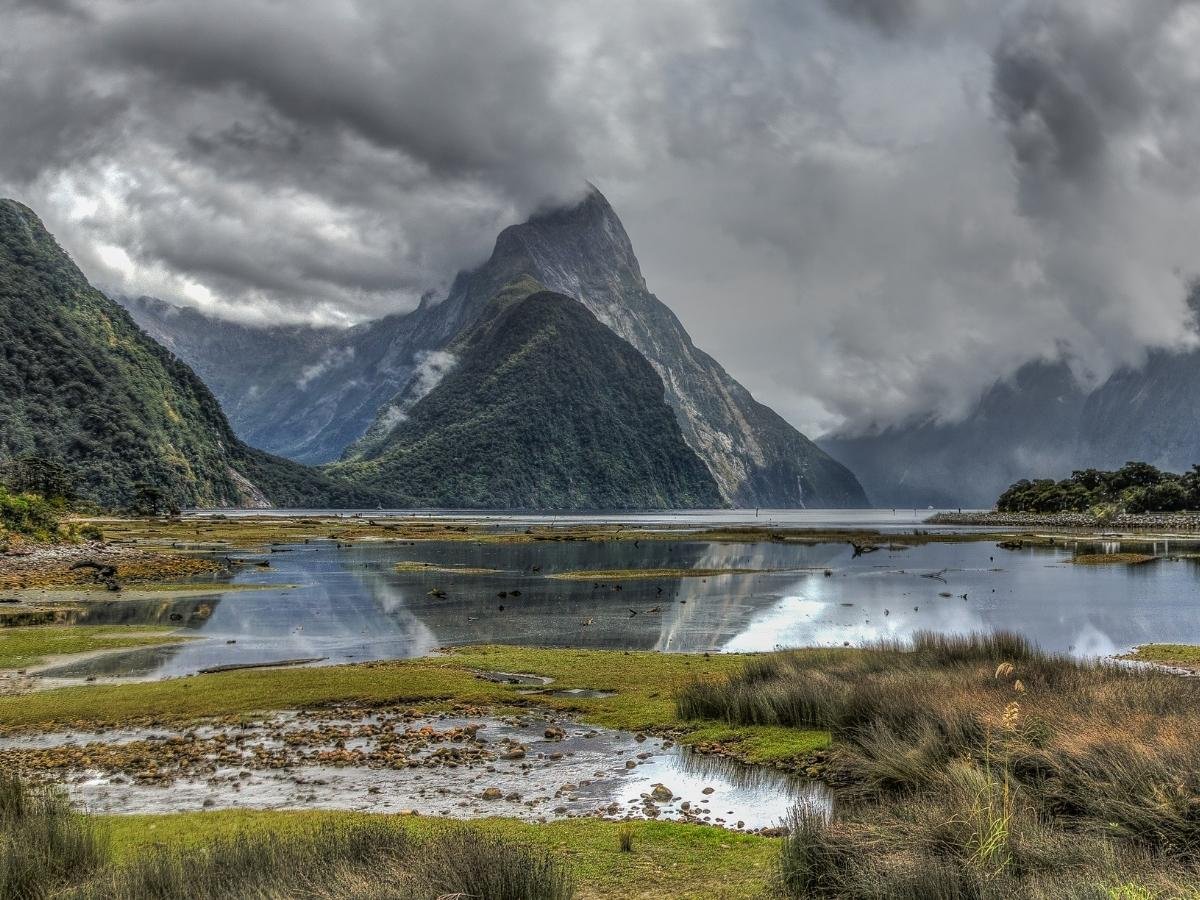
Now, don’t let the long journey detour you. The road to Milford Sound is one of the most jaw-dropping journeys you’ll experience during your time in New Zealand, and once you pass through the 0.75-mile (1.2 km) Homer Tunnel, the surroundings get even more dramatic. After arriving in Milford Sound, you’ll switch from coach bus to boat and explore the staggering cliffs and raging waterfalls Milford Sound is known for.
Nothing can prepare you for the beauty you’ll see here, so we’ll save our breath and let you experience this masterpiece yourself.
Day 11: Full Day in Queenstown
Hopefully, you’ve saved a bit of room in your budget because if you want to partake in the endless activities, Queenstown is known for, you’ll have to be willing to pay. Below, we’ve laid out our top four things to do in Queenstown:

Bungy Jump – Queenstown is home to the world’s first bungy jump, so it only makes sense to tick off this bucket list item here. You have three locations to choose from, the Ledge Bungy, Nevis Bungy, and the most iconic, the Kawarau Bridge Bungy.
Shotover Jet – You know that type of fun where you have 20-minutes of pure childlike joy? That’s what you’ll get with the Shotover Jet. Speed through deep and narrow canyons, twisting, turning, and spinning until you’ve run out of breath to scream.
Wine tour – Besides adrenaline activities, Queenstown is known for its award-winning Pinot Noir. And we promise, there’s hardly a more scenic place to sample delicious wine than in Gibbston Valley. Hop aboard a wine tour that visits multiple wineries, or visit New Zealand’s largest wine cave at Gibbston Valley Winery,
TSS Earnslaw Lake Cruise – See Queenstown and the surroundings from a different angle as you cruise across Lake Whakatipu aboard a coal-fired steamship. After a 45 minutes journey, you’ll arrive at Walter Peak for a tasty BBQ and farm tour before returning to Queenstown.
Day 12: Aoraki Mt Cook Village
Travel time: 3.5 hours
Today you’re back on the road, with yet another scenic drive to Aoraki Mt Cook National Park. You’ll see this glorious mountain well before you reach it, driving down a lengthy 34 miles (54.7 km) dead-end road until you cannot drive any further. Staring up at Mt Cook, you can’t help but be fascinated by its beauty and sheer power standing proud over New Zealand.

What to do and see in Aoraki Mt Cook:
Aoraki Mt Cook National Park is known for its astonishing beauty and dramatic landscapes, so it only makes sense the best things to do and see here involve getting amongst nature. If you want to see the most of your surroundings with the least effort, hop aboard a scenic flight and soar above the snowcapped mountains.
On the other hand, if you want to see the landscapes on your own two feet, there are endless hiking opportunities around. The most popular, the Hooker Valley Track, takes you along a flat and well-marked path to the glacier Hooker Lake, complete with icebergs. Or, for something more challenging, hike up 2,200 stairs to Sealy Tarns with unreal views of Aoraki Mt Cook National Park.
Where to eat:
Keep in mind that the closest grocery store to Aoraki Mt Cook Village is in Twizel, 40 miles (65 km) away, so you’ll want to pack any essentials and some snacks. You’re not out of luck when it comes to food options, though. Aoraki Mt Cook Village is home to the fine-dining Panorama Restaurant and the more casual Old Mountaineers’ Cafe.
Where to stay:
$$ – Mt Cook Lodge and Motel
$$ – Aoraki Alpine Lodge
Day 13: Lake Tekapo
Travel time: 1 hour
Before you discovered this itinerary, you likely had already seen pictures of Lake Tekapo. The entire landscape is nothing short of jaw-dropping, with the most vivid blue glacier lake imaginable, backed by the snowcapped Aoraki Mt Cook, with purple and pink lupins dotting the foreground.
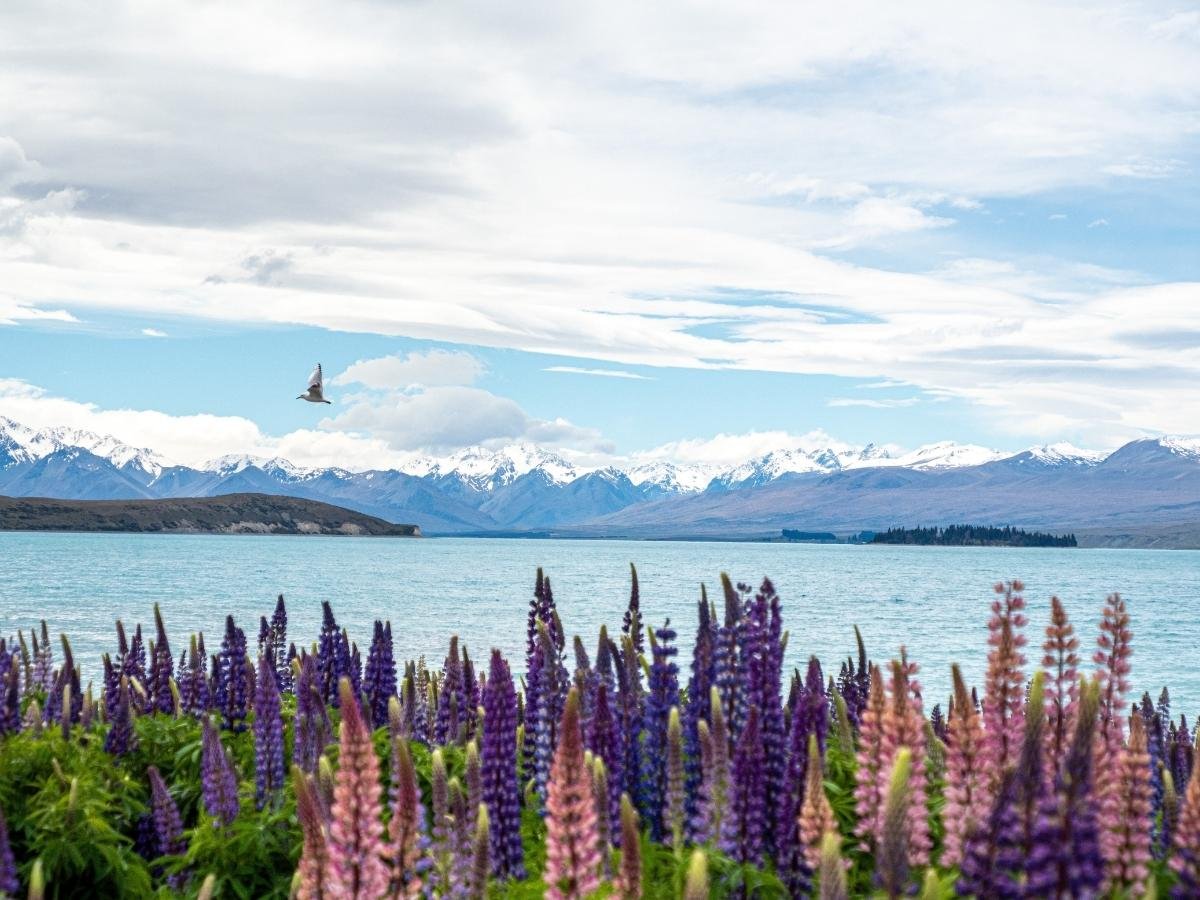
What to do and see in Tekapo:
Visiting Tekapo is all about taking in its surroundings. But did you know Tekapo is also one of the best places in the world for stargazing? Join a tour at Mt John Observatory, or simply head outside and look up – you’ll be awestruck. Other things to do in Tekapo include visiting the iconic Church of the Good Shepherd, Hiking up Mt John for endless views of the Southern Alps, or relaxing at the Tekapo Springs Hot Pools.
What to eat:
We’re not going to lie; Lake Tekapo isn’t known for its culinary scene. Even so, you’ll find a few higher-end restaurants like Rakinui Restaurant & Bar, Blue Lake Eatery & Bar, and a few cheaper options like Jade Palace Chinese Restaurant. But given the visitor numbers way outweigh the number of residents, you’ll want to book in advance or expect a bit of a wait.
Where to stay:
$ – Lake Tekapo Motels & Holiday Park
$$ – Peppers Bluewater Resort Lake Tekapo
Day 14: Drive to Christchurch, Fly Home
Travel time: 3 hours
Today you’re wrapping up your epic trip with a 3-hour drive to Christchurch. If your flight is later in the day, set aside some time to explore this strong-willed city. In 2011, Christchurch was severely damaged by an earthquake, and signs can still be seen of forceful shaking. However, despite the damage, local business owners have used their Kiwi ingenuity to rebuild the city with an enchanting spark.

If you’re flying back to Europe or North America, you’ll transit in Auckland before heading home. Hopefully, you’ve made many memories to last a lifetime and are already planning your next visit!
Final Thoughts
All that’s left to do now is hop on that plane and start your New Zealand adventure! Until then, check out 48 Hours in Lisbon and 72 Hours In Cape Town for more wanderlust-inducing itineraries.



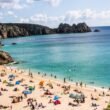
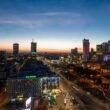


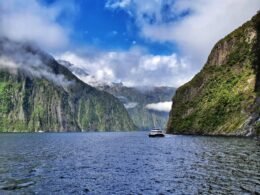
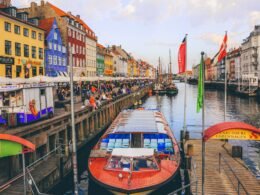


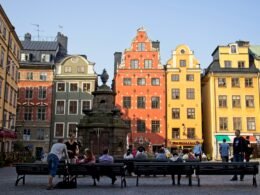

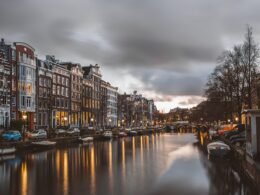
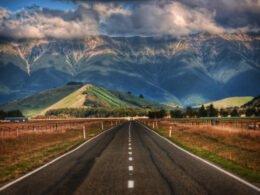
I will shortly be travelling to New Zealand and found this article very interesting and informative.